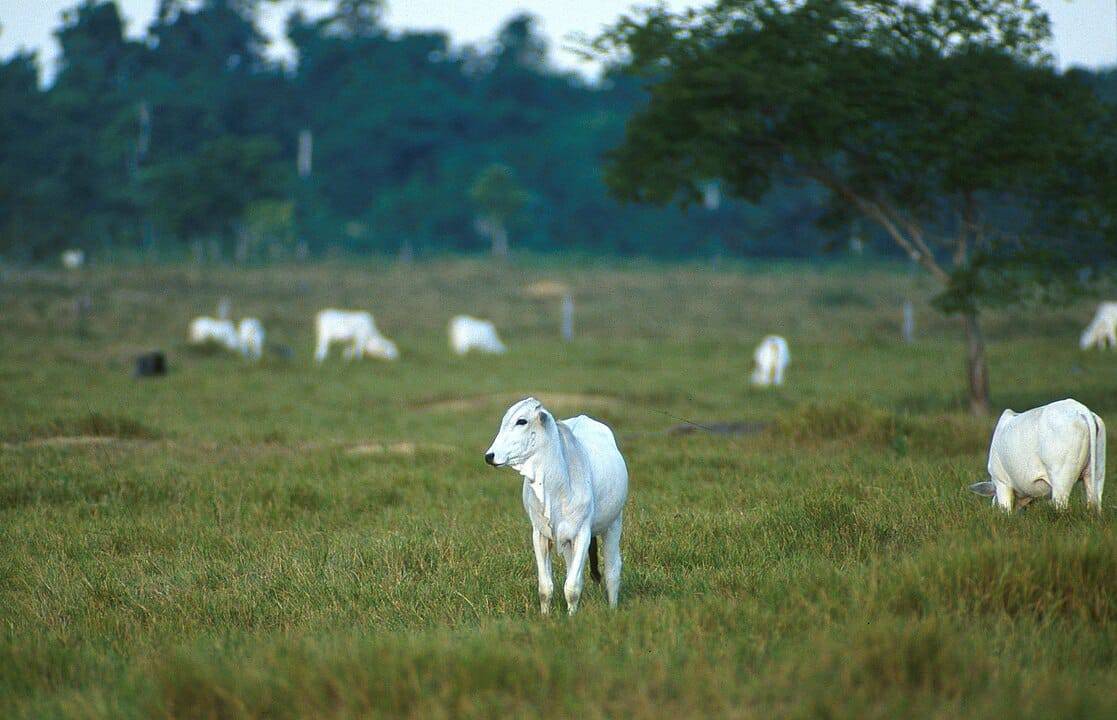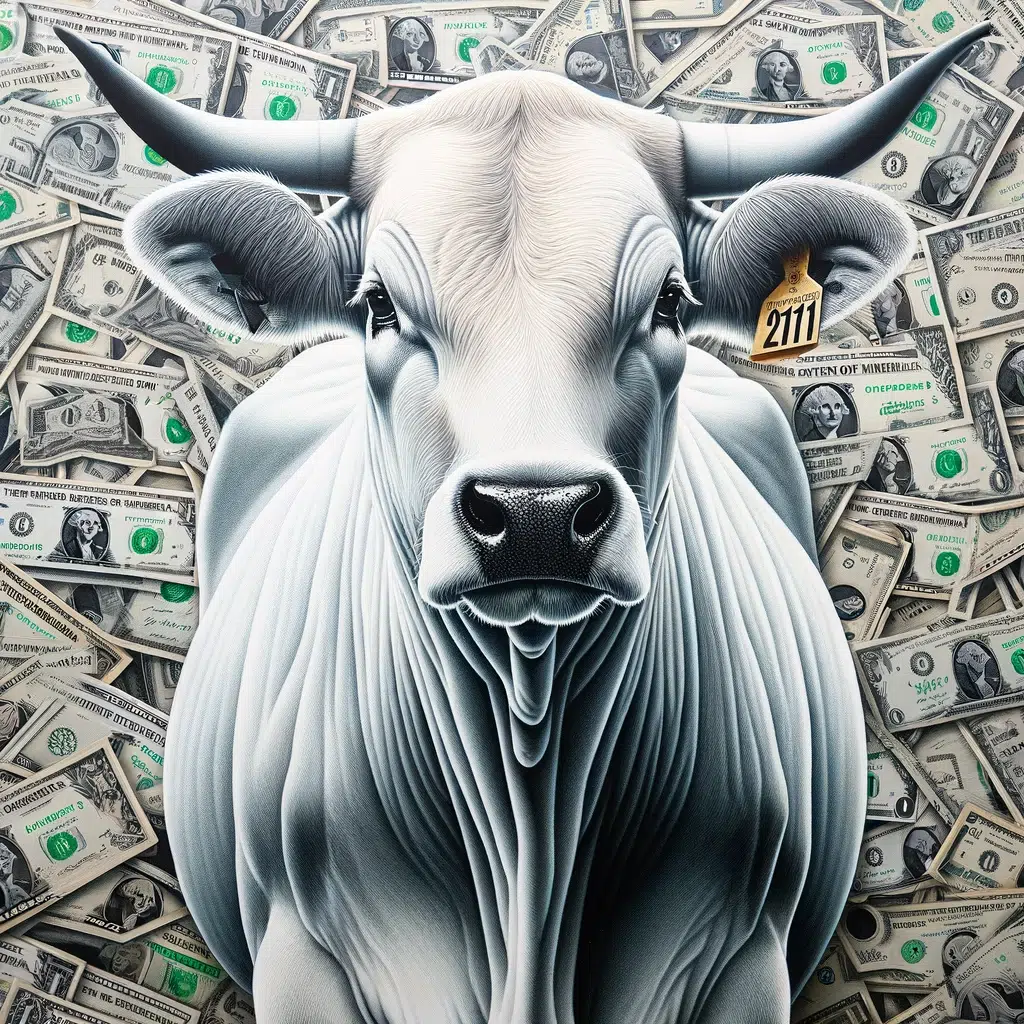Record-Breaking Auction
In June, a Nelore cow in Brazil set a record at auction, fetching a staggering $4.3 million. This sale highlighted the cow’s exceptional qualities and underscored Brazil’s dominance in the global beef industry. The Nelore, an offspring of the ancient zebu breed, is a testament to Brazil’s cattle ranching prowess. The auction of the Nelore, offspring of the ancient zebu breed, exemplifies Brazil’s expertise in cattle ranching.

Credit: Scott Bauer, U.S. Department of Agriculture – http://www.public-domain-image.com/public-domain-images-pictures-free-stock-photos/fauna-animals-public-domain-images-pictures/cows-and-calves-public-domain-images-pictures/nelore-beef-cattle.jpg, Public Domain, https://commons.wikimedia.org/w/index.php?curid=24853908
Why So Expensive?
Several factors contribute to the Nelore’s high value:
- Heat and Insect Resistance: The Nelore’s thick skin and sweat glands make it highly resistant to heat and insects, crucial traits for survival in tropical climates.
- Metabolic Efficiency: These cows efficiently convert low-quality forage into beef and are less prone to bloat, making them economically advantageous.
- Meat Quality: Nelore beef is lean yet palatable, aligning with modern dietary preferences for lower-calorie, leaner meats.
- Reproductive Efficiency: Nelore cows have long, prolific reproductive lives and exhibit strong maternal instincts, ensuring the continuation of these desirable traits.
- Hardiness: The breed’s resilience in harsh conditions makes it a reliable choice for beef production in challenging environments.
Breeding and Expansion
Nelore’s origins can be traced back over 2000 years to India. Brought to Brazil in the 19th century, the breed underwent significant development, with Brazil becoming its largest breeder. Today, the Nelore is widespread in Brazil and countries like Argentina, Paraguay, Venezuela, and even the United States.
Environmental Impact
Cattle ranching, including that of Nelore cows, has been a major driver of deforestation in the Amazon rainforest. While Nelore cattle are naturally adapted to harsh conditions and have the potential to reduce the environmental impact of ranching, they still contribute to greenhouse gas emissions. Efforts are ongoing to make cattle ranching more sustainable, but the industry’s recognition of environmental impacts remains limited.
The Future of Nelore Cattle
Despite environmental concerns, the Nelore breed continues to thrive due to its numerous advantages. As the beef market continues to grow, the Nelore’s role in sustainable and efficient beef production becomes increasingly important. The breed’s unique characteristics and Brazil’s commitment to improving cattle genetics ensure the Nelore’s continued prominence in the global beef industry.
In conclusion, the Nelore cow’s record-breaking auction price reflects its exceptional qualities and the significant role it plays in the beef industry. Its resilience, efficiency, and meat quality make it a valuable asset, while ongoing efforts to improve sustainability highlight the complexities of modern cattle ranching. As the industry evolves, the Nelore will undoubtedly remain a key player in the global meat market.
You might also enjoy:
Watch: Why You Should Never Approach A Bison
This Video of Cow Sliding Down A Snowy Hill Will Make Your Day
Watch: Maasai Warrior Chases Huge Lion for Eating His Cow
Join our Forum for free today!

- The Bond Between a Wild Baby Bison and Her Rescuer - July 20, 2024
- An Excited Husky’s First Ever Time in Snow - July 20, 2024
- Top 20 Colorful Species To Brighten Your Day - July 14, 2024


